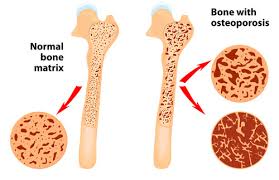What is the full form of BMD?
-
What is the full form of BMD?
-
The full form of BMD is Bone Mineral Density BMD is a test that measures the density of calcium, and other types of mineral density in your bones. It represents how many grams (g) per unit volume of your bone is packaged with calcium.BMD helps to detect osteoporosis and risk for bone fractures.
How a BMD test performed?
Bone density testing can be done in several ways. It is a non-invasive, painless procedure with low radiation exposure, Mainly two type of test performed to know the bone density
Central DXA - In this type of scan hip, spine, or other bones are scanned, Central DXA stands for Dual Energy X-ray Absorptiometry. This test endures for around 10 minutes. During this test you have to lie down on the padded table, a machine passes above you with low radiation, it concocts a picture of your skeleton. This test is generally performed to know the risk of fracture, especially the hip area. it is expensive to test.
Peripheral DEXA (p-DEXA)-In this type of scan bone density of wrist, finger, and heel measure. The machine is portable so it can easily move from one place to another place, this machine is in the healthcare centre, diagnostic centre, pharmacies, and health faires. It cheaper as compared to central DEXA.
Why BMD test performed?
BMD test performed to know the :
1. To diagnose the osteoporosis
2. Monitor the osteoporosis treatment
3. To test the bone density before the bone fracture
4. Check the risk of the broken bone
How to prepare for BMD test?
1. Stop calcium medicine for 24 hours before the exam.
2. IF you have undergone contrast CT, MRI procedure(barium or contrast dye) wait for 7 days before having BMD
3. Try not to wear garments with metal zippers, belts.
Who should get test ?
Osteoporosis is very common among older women, yet men can have it, as well. chance increase as age, Doctor prescribed this test if you have any of the following:
1. Women age 65 or older
2. Postmenopausal woman 50 or older
3. Backpain in your spin
4. The height decreases by 1.5inch
5. Long-term steroid usage
6. Organtransplant procedure
7. Low level of hormone
8.Your Posture has gotten more slouched
9. Bone break after the age of 50
Result of BMD
Bone density test divided into two scores:
T-score:This score shows your bone density is normal, below normal or risk of osteoporosis. It compares bone density with healthy young adult.
Range of score
1 and above: bone density is normal
1 to -2.5: bone density is low, chances of osteoporosis
2.5 and above: You have osteoporosis
Z score: Z score below 2.0 indicates less bone mass than someone your age and that it could be caused by something other than ageing.





